The Danube - Europe‘s Artery of Life

The Danube - Europe‘s Artery of Life
A new documentary reveals how fascination for the Danube – with its romantic shores, its wild nature to its changing landscapes – is inescapable.
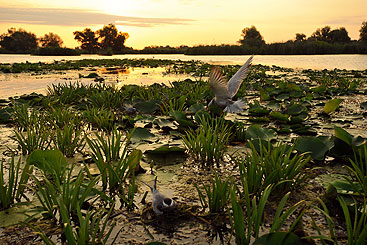
At the heart of the SADC cooperation, is the philosophy of ‘Ubuntu’, that all people are interconnected, and therefore interdependent.
The crew trudge through chest-deep water, careful not to disturb
any nests hidden in the reed beds. There is no land on
which to rest the camera, so they carry their equipment. Ravaged
by mosquitoes, which swarm like paparazzi in the thousands,
the crew wait for hours until the actors are ready. In
this film, however, the actors are birds.
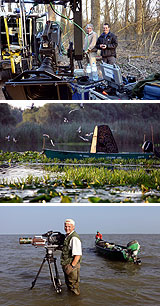
Filmmakers Michael and Rita Schlamberger spent more than two years on location in all seasons. They returned with over 400 hours of material, though only two hours will be included in the finished film.
A new film, called ‘The Danube - Europe’s Artery of Life’, presents an elaborate portrait of the Danube River. The two-part series is a journey down the river into the wilds of the Danube Delta and shows the impact of the river on nature and people. Directed by award-winning Styrian nature filmmakers Rita and Michael Schlamberger, the film is a co-production of ScienceVision, ORF Universum, NDR and BR, and was made in association with ARTE and the ICPDR.
Over a period of two years, the filmmakers travelled over 90,000 kilometres – or 30 times the length of the river – and spent 350 days on location documenting all the varying faces of the river. “We were extremely surprised by how many things we didn’t know about the Danube,” says Director Michael Schlamberger. “This is one of the interesting things about filmmaking: you think you know but then you realize you haven’t even been at the bottom of what is possible.”
The Danube Delta in the spotlight. The name of the film was inspired by the amazing biodiversity to be found in the Danube Delta. The complex labyrinth of the delta’s waters hosts the largest breeding colony of pelicans outside of Africa and attracts hundreds of thousands of birds to hunt in the fish-rich waters.
“As a filmmaker, when you travel through the delta, you have the feeling you are in Africa or deep in the Amazon Basin rather than Europe,” says Schlamberger, “because it’s this enormous number of animals.”
Influenced by weather and climate, the Danube constantly changes. Temperatures last winter froze the river from Vienna to the Black Sea, providing the filmmakers with truly unique footage.
“From the feeling of being on the Amazon in summer, in the winter you thought you were in Siberia or the Arctic,” says Schlamberger. “There are so many faces of the Danube.”
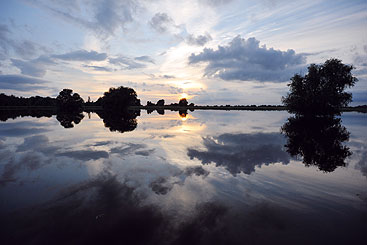
“The Danube Delta is a vast water wilderness which you wouldn’t think could still exist in europe,” says the film’s director Michael schlamberger.
Living in harmony with the changing river. The unpredictability of the river inspires efforts to try to control it through artificial measures, but Schlamberger and his crew witnessed a community that adapts their lifestyle to the floods of the river. The village of Čigoč in Croatia is familiar with floods. The Sava River can be so changeable that the water level may rise to ten metres overnight, but there is no human intervention. Villagers have adapted their way of living – from the way they build their houses to the way they raise their animals – to live in harmony with nature.
“You can’t use this as a formula over densely-populated areas like Vienna or Budapest,” says Schlamberger, “but these are ideas that are very current and institutions are trying to allow the river to flow in a more natural way. It’s not old-fashioned what they’re doing in this village; it’s a visionary way forward.”
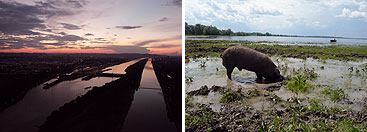
This is one side of life along the river that Schlamberger hopes audiences think about long after the credits roll. “I hope the film makes people think that not everything should be solved or managed by technical means,” he says. “A river is a complex system but there should be ways of dealing in harmony with nature.”
Audiences can be sure to see the romantic side of the river in the film as well, from the snow-capped peaks of the Alpine foothills to the wilderness of the delta. In the end, Schlamberger says, a river is like a good story: “It’s an easy dramaturgy. You go from A to B, from source to the end and you discover things along the way.”
The Danube - Europe’s Artery of Life was broadcast on June 14 and 21 on ORF 2 in Austria. A DVD version of the film will be available in 2013. As a coproducer of the film, the ICPDR is planning viewings in Danube countries in the coming months.
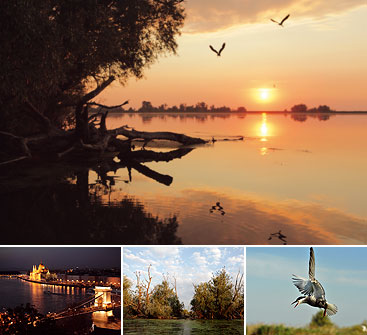
Despite the Danube’s importance as a modern waterway for transportation, it still retains the charm of a bygone era and is full of mystery. The river continues to shape the lives of those living in the region – wildlife and people alike.






